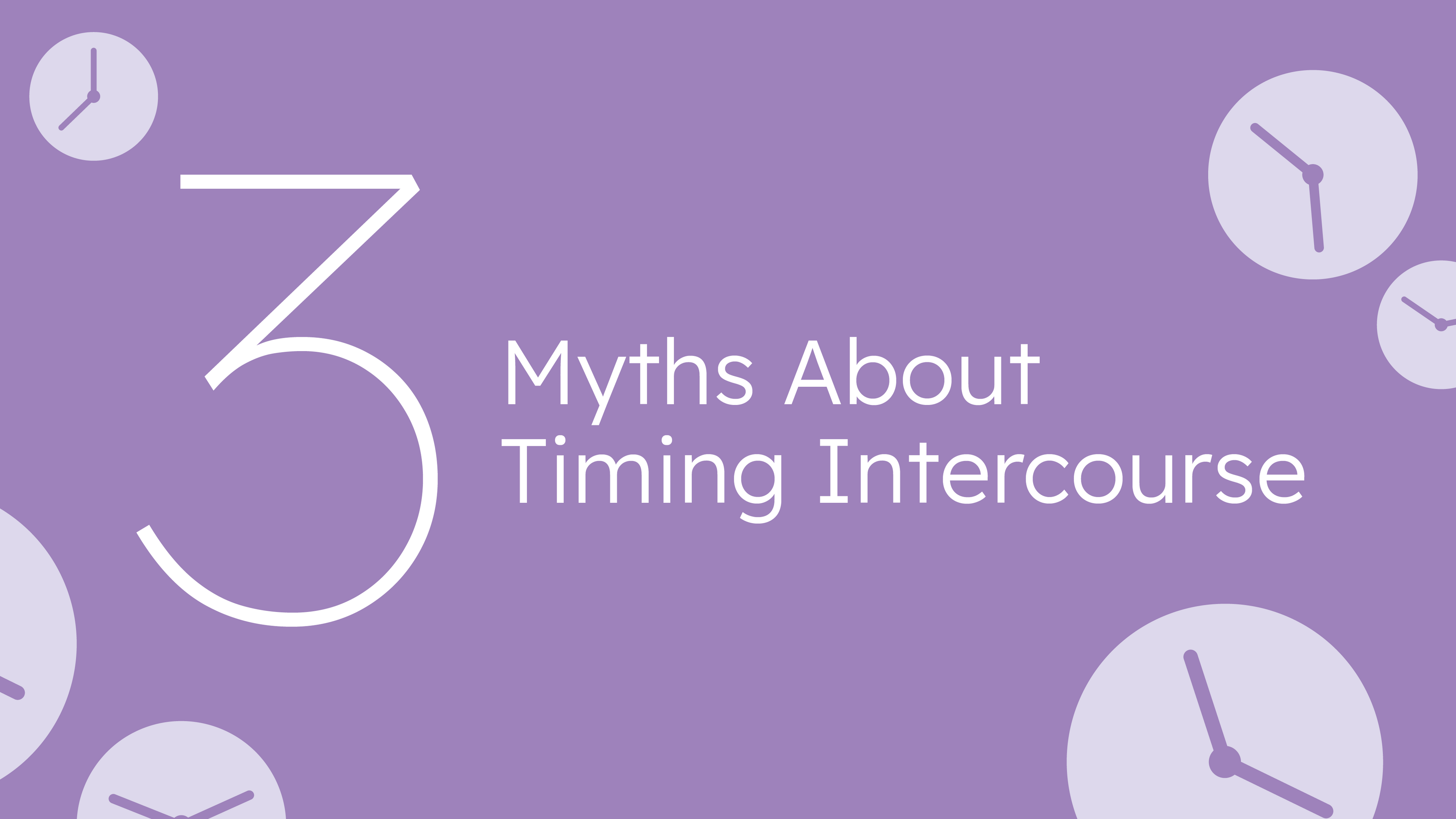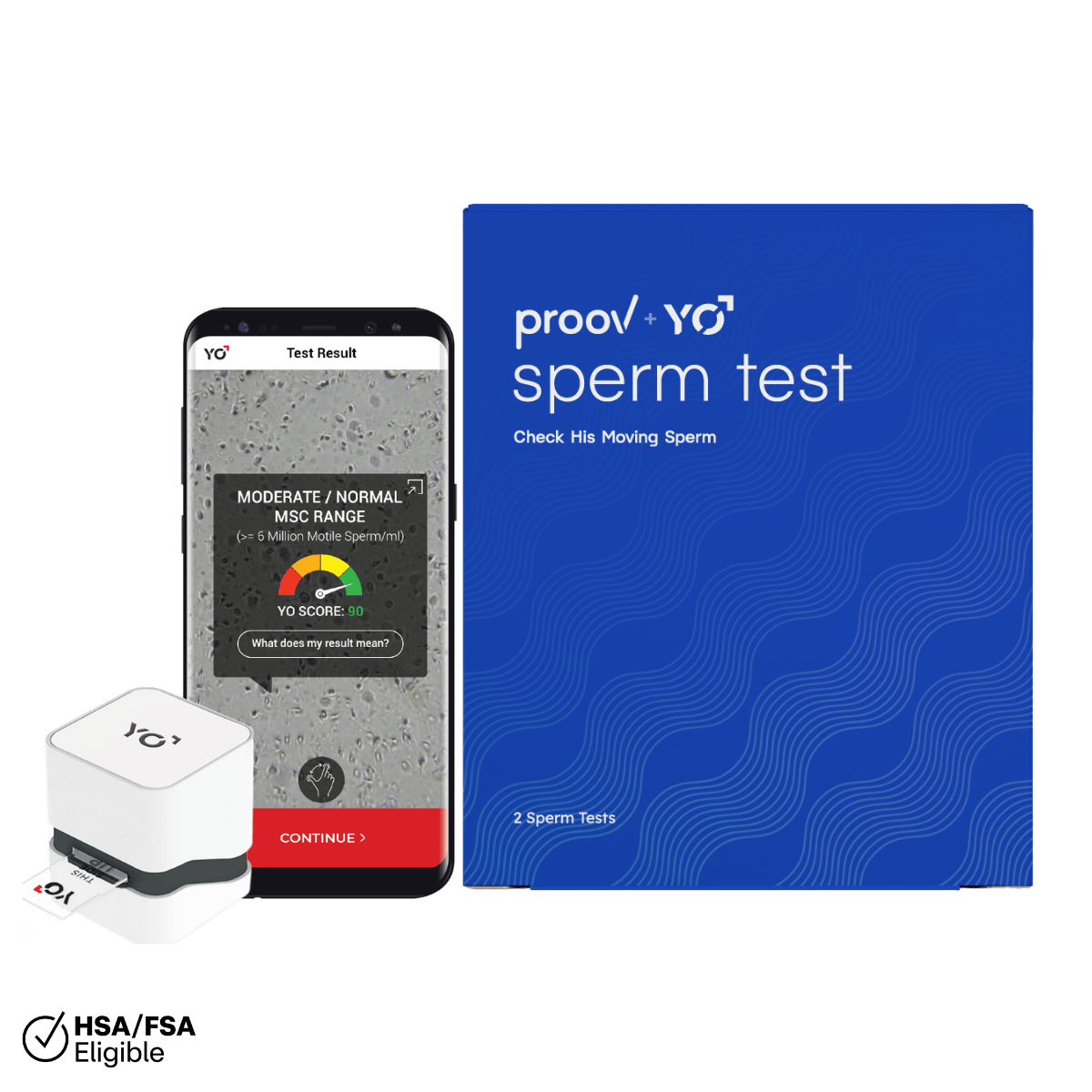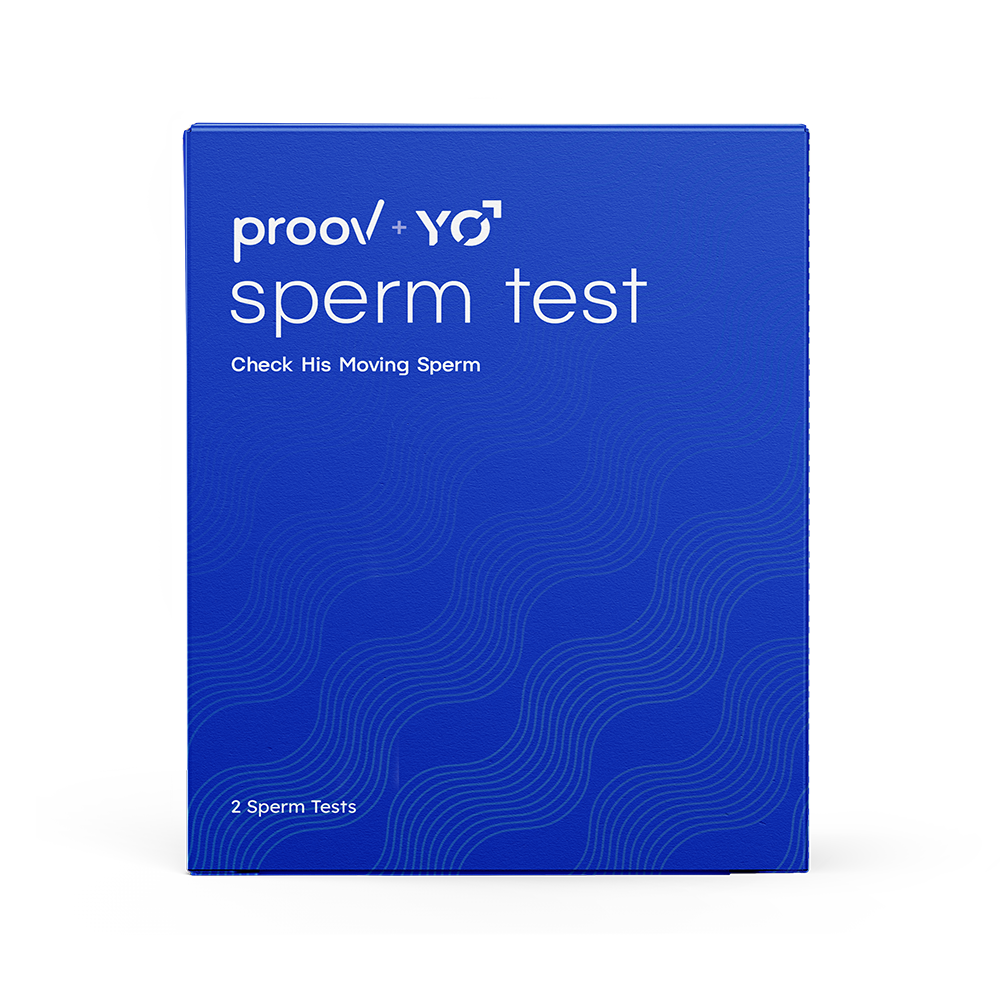Written by: Dr. Amy Beckley, PhD, Founder and Inventor of the Proov test — the first and only FDA-cleared test to confirm successful ovulation at home.
Written on: 1/10/22
When trying to conceive, knowing when exactly to try is so important for your success. There is actually a right time to try during your cycle to maximize your chances at conception.
But, we’ve noticed that there are many misconceptions about timing intercourse in the trying to conceive world. Should you start trying once you get a positive ovulation test? Or wait until you get your darkest ovulation test? Or is that too late?
Keep reading to learn more about the 3 most common myths we see about timing intercourse when trying to conceive.
Why is timing intercourse important when TTC?
When TTC, timing is (almost) everything! This is because there are only a few days each cycle when conception is actually possible.
In order for conception to occur, you need to have sperm, egg, and for them to meet. Sperm and egg can only meet around ovulation.
But eggs are only viable for about 12-24 hours after ovulation, meaning sperm only has a short window of time to fertilize the egg. Even trying just a little too late may cause you to miss the egg altogether.
Luckily, sperm can survive in the female reproductive tract for up to 5 days. Timing intercourse just before ovulation can give you the best possible chance at sperm reaching that egg.
Which hormones help predict ovulation?
There are two main hormones who aid in predicting ovulation during the first half of your cycle: estrogen and luteinizing hormone (LH). Each cycle, your ovaries recruit many follicles to mature eggs, one of which will reach full maturity and eventually ovulate.
As the dominant follicle containing the maturing egg starts growing, it produces estrogen. Rising estrogen levels during the follicular phase (the first half of your cycle) are the first sign that ovulation is coming, typically within the next 5 days.
Once estrogen reaches a high enough level, this signals to your brain that the egg is mature and ready for ovulation. Your brain then sends an LH surge to the ovary to trigger the follicle to rupture and release the egg. Ovulation typically occurs about 12-36 hours after an LH surge.
Myth #1: Measuring LH is the best way to predict ovulation.
It’s no secret that ovulation tests are great tools when trying to conceive. Predicting ovulation by measuring LH levels provides you with valuable information about when you should ovulate so you can time intercourse accurately.
However, as we mentioned, LH isn’t the only hormone which predicts ovulation. Tracking estrogen levels during the first half of your cycle can provide an even longer fertile window and more time for sperm to have the opportunity to meet that egg.
In fact, studies show that the few days leading up to ovulation are the days in which intercourse is most likely to result in conception.

Once estrogen reaches a high enough level, this signals to your brain that the egg is mature and ready for ovulation.
Myth #2: You should wait until your “most positive” ovulation test to start trying.
Many ovulation test brands will say you should wait until your “most positive” ovulation test to start having intercourse. This means waiting until the highest amount of LH is present in your urine, or the second line is the darkest it’s been.
However, this may be too late in most cases. You see, studies show that an LH level of at least 25 mIU/ml is most predictive of ovulation. This means most of us will ovulate in the next 12-24 hours if our LH surges to at least that level. Timing when to have sex after lh surge can be difficult.
If you’re timing sex after lh surge waiting until your ovulation test reaches the darkest it will be — meaning the highest LH level of your surge — you risk missing ovulation altogether.
Myth #3: You shouldn’t start trying until you get a positive ovulation test.
As we saw in a previously mentioned study, your chances of pregnancy are highest during the days leading up to ovulation. While you do have the highest chances of pregnancy the day immediately before ovulation, having intercourse across multiple days during your fertile window can help maximize your chances.
In most cases, a positive ovulation test is predictive of your 2 most fertile days, meaning your LH surge precedes ovulation by over 24 hours. However, there is a large number of us who ovulate much sooner after their LH surge (myself included!).
Studies show that at least 30% of the ovulating population ovulates on the same day as their LH surge. This means if you were to only have intercourse on the day you got the positive ovulation test, then you’d only have 24 hours max to fertilize the egg before it dies.
If this is you, identifying your longest possible fertile window and having intercourse before you get a positive ovulation test can positively impact your chances at success.

Identifying your longest possible fertile window and having intercourse before you get a positive ovulation test can positively impact your chances at success.
So how do I identify my longest possible fertile window?
We’re so glad you asked! As we’ve seen, understanding both your estrogen and LH levels is critical for better understanding when you should ovulate.
With Proov Complete, you can measure LH and E1G (urine marker of estrogen) all on the same test strip. The Proov Insight app will prompt you to test early enough in your cycle so that you can catch your E1G rise and identify up to 6 fertile days. Then, you’ll continue testing until you see a surge in LH, marking peak fertility.
To increase your chances at conception, you’ll want to start trying once the Proov Insight app shows a rise in E1G. Sometimes, timed intercourse when trying to conceive isn’t the…sexiest thing ever. The good news is that you do not need to have sex every day during your fertile window for the best chance at pregnancy; once every other day is plenty.
Here at Proov, we believe information is power. With Proov Complete, you can now have more data than ever to help you learn more about your ovulation and time intercourse accurately, so you can get pregnant faster.













